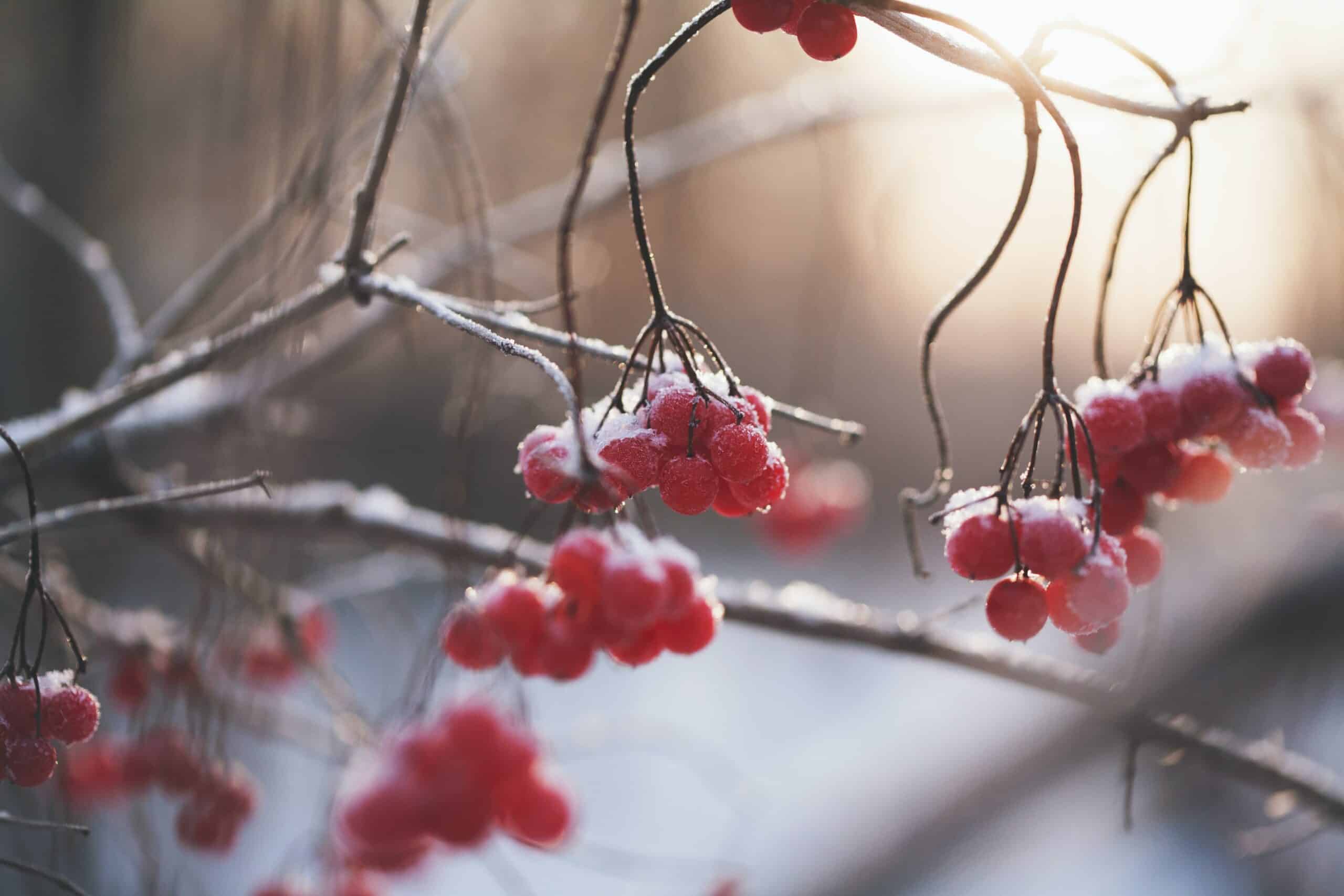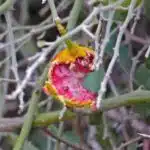Have you ever tasted the sweet, tart flavor of a wild raspberry? If so, you know that nothing compares to the unique taste and texture of these juicy fruits. But did you know that growing and caring for wild raspberry bushes can be a rewarding experience that not only provides your own delicious bounty but also serves your local environment?
Juxtaposing the delightful taste of wild raspberries with the idea of providing an environmental service allows us to recognize how growing these plants can benefit both our palates and the environment. Wild raspberries are resilient and hardy, making them an excellent choice for home gardeners who want to bring a touch of nature into their yards while also giving back.
Whether you are looking to cultivate a large bramble patch or start with just one or two plants, learning how to grow and care for wild raspberry bushes is simple yet rewarding. With just a bit of effort, you can enjoy an endless supply of fresh fruit as well as provide food for birds and other wildlife. Read on to find out how!
Understanding Wild Raspberries
Wild raspberries are a delightful, flavorful addition to any garden. But before you start growing your own, it’s important to understand the basics of this type of berry bush. Knowing what you’re up against will help ensure that you get the most out of your wild raspberry harvest.
Wild raspberries can be found in many different climates and soils. Depending on the variety, they can tolerate cold temperatures and flourish in warm climates as well. Wild raspberry bushes have a shallow root system, which makes them easy to transplant and care for. They also require minimal pruning and rarely suffer from pests or diseases.
When planting wild raspberry bushes, it’s important to choose an area with good drainage and plenty of sunlight. Mulching is recommended to retain moisture around the roots, while avoiding over-watering is key for healthy growth and ripening berries. With some basic knowledge of their needs and careful attention to detail, anyone can enjoy a delicious crop of wild raspberries!
With the right conditions in place, choosing the ideal location for wild raspberry bushes can be an enjoyable experience.
Choosing The Right Location For Wild Raspberry Bushes
Choosing the right location for wild raspberry bushes is a critical step to ensure their success. When selecting a spot, there are several things to consider. First, it’s important to look for an area that has plenty of sunlight and good drainage. Wild raspberries need at least six hours of direct sunlight per day and they don’t tolerate standing water well. It’s also best to choose an area away from trees and shrubs that may compete with the raspberries for resources like light and water.
The soil should also be relatively loose and well-draining, as wild raspberries prefer loamy soils. If your soil is too dense or clay-like, then it can be amended with organic matter such as compost or manure in order to improve drainage. You may also want to test the pH levels of your soil before planting, as wild raspberries prefer slightly acidic soils with a pH range between 5.5 – 6.5.
Selecting the ideal location for your wild raspberry bushes is essential for successful growth and health; however, it takes more than just finding the right spot—the soil must also be prepared properly in order to give your plants the best chance possible of thriving.
Preparing The Soil For Wild Raspberry Bushes
Just like planting a vegetable garden, preparing the soil for wild raspberry bushes is an essential step in nurturing these sweet fruits. It’s like providing a nutritious, well-balanced meal for your plant so it can grow strong and healthy.
The first task when preparing the soil is to make sure it has good drainage. Wild raspberry bushes prefer slightly acidic soil with a pH of around 5 to 6.5, so you may need to add some compost or peat moss if needed. Additionally, you should add plenty of organic matter such as leaves, straw or grass clippings to help ensure there’s adequate water and nutrients available.
Once the soil has been amended and prepped, it’s time to get ready for planting. Depending on how much space you have available, you can either plant individual raspberry bushes or create rows that span several feet in length. In either case, you’ll want to give your plants enough room to spread out and grow without becoming overcrowded. With proper care and attention, your wild raspberry bushes will bear sweet fruit year after year—a reward worth all the effort! To ensure success in your endeavor, be sure to choose a spot where they will get ample sunlight and water as they start their journey towards bearing delicious fruit.
Planting Wild Raspberry Bushes
When it comes to planting wild raspberry bushes, there is no exaggerating just how important it is! If you want your raspberry bushes to be healthy, vibrant, and fruitful, you must ensure that they are planted in the right way and with the right materials.
Fortunately, planting wild raspberry bushes isn’t as challenging as some other gardening tasks. By following a few simple steps and properly preparing the soil beforehand, you can get your raspberry patch off to an excellent start.
First, select a spot for your raspberry bushes where there’s plenty of direct sunlight and well-drained soil. Dig a hole that’s twice as deep and wide as the root ball of each bush. Place into each hole a handful of compost or aged manure before setting in the bush itself. Water thoroughly after planting and mulch with straw or bark chips to help keep soil moist. Be sure to space each bush at least three feet apart so they have room to spread out when mature!
By taking these simple steps, you can give your wild raspberry bushes the best possible start on their journey towards becoming all that they can be!
Watering And Fertilizing Wild Raspberry Bushes
Nate, a master gardener in Pennsylvania, was able to successfully grow wild raspberry bushes in his backyard. He followed the steps and tips for growing these bushes and they flourished beautifully. Here are some tips Nate recommends on how to keep them healthy:
• Water the soil around the wild raspberry bush regularly and evenly. • Fertilize the soil with an all-purpose fertilizer once a year in springtime. • Add mulch around the base of the bush to help retain moisture.
Watering and fertilizing your wild raspberry bushes is essential for their health and growth. By providing your raspberry plants with enough water, you will ensure that they have access to all important nutrients such as nitrogen, phosphorus, potassium, magnesium, sulfur and calcium. These nutrients will help stimulate healthy foliage growth and promote fruiting. Additionally, fertilizing your plants annually helps replenish any lost nutrients due to heavy rains or dry spells. Adding a layer of mulch around the base of each bush also helps keep moisture in the soil which is important for their continued growth and flowering.
When it comes to caring for your wild raspberry bushes there are other things you need to consider as well such as controlling weeds in your plantings and keeping away pests like rabbits or deer who may be tempted by the sweet fruits. Taking these additional steps can ensure that your raspberry bushes remain vigorous throughout their life cycle so you can enjoy their delicious fruit every year!
Controlling Weeds In Wild Raspberry Plantings
Weeds can make or break a wild raspberry planting, so it’s important to take steps to keep them under control. There are several ways you can do this. First, you can use mulch and weed barriers on the soil around the plants. Mulching helps to suppress weeds while also improving the soil quality, and a weed barrier will prevent any new weeds from sprouting. Second, you can hand-pull any weeds that appear in your planting bed. It’s best to pull them before they go to seed so that they won’t spread further throughout your garden. Finally, you can use a pre-emergent herbicide to prevent weeds from germinating in the first place.
Of course, there are some natural methods of weed control too. If you choose to use these methods, be sure to research which ones are safe for wild raspberry plants before applying them! You could try companion planting with other plants that out-compete weeds for resources or lay down a layer of newspaper or cardboard as a natural weed barrier.
No matter what method you choose for controlling weeds in your wild raspberry plantings, it’s important to stay vigilant and take action quickly when they appear. After all, the healthier your wild raspberry bushes are, the more delicious fruit they’ll produce! TIP: Use mulch around your wild raspberry bushes as not only does this help to suppress weeds but it also improves the soil quality – helping your raspberries flourish!
Pruning Wild Raspberry Bushes
Pruning wild raspberry bushes is an important part of caring for them and ensuring a healthy harvest. After all, raspberries are prone to disease due to their high moisture content, so providing proper care is key. Plus, pruning helps promote new growth and makes the plants look tidy.
So how do you go about pruning wild raspberry bushes? It’s actually quite simple. First, start by removing any dead canes or branches that have lost their leaves or fruit. Then, cut off any weak or diseased canes that are below the crown of the plant. Finally, thin out overcrowded areas and remove any canes that are growing in an undesirable direction.
And don’t forget to use good hygiene when pruning! Be sure to disinfect your tools before and after use with rubbing alcohol or a 10% solution of bleach and water. This will help prevent the spread of disease from one bush to another. Taking these steps will ensure that your wild raspberry bushes stay healthy and produce a plentiful harvest season after season!
Harvesting Wild Raspberries
Ripe for the picking, wild raspberries bring sweet delight and a burst of flavour to your culinary creations. Like a pearl in an oyster, harvesting these ruby gems is an exciting experience that has many rewards. When it comes to harvesting wild raspberries, timing is key; let’s explore how to get the most out of your harvest.
Like any crop, the best time to pick wild raspberries will depend on where you live and the variety you are growing. Generally speaking, mid-summer is the ideal moment for harvesting wild raspberries. You’ll know that they’re ready when their colour deepens from a bright red to a darker shade, and they become plump and juicy. It’s important not to wait too long or else you may end up with overripe fruit that can spoil quickly.
To pick your raspberries, simply hold them gently between your thumb and forefinger, then twist them off the vine. If they don’t come away easily, they aren’t quite ripe yet – try again in a few days! Be sure to inspect each berry before you pick it as some may have been nibbled by pests or birds. Once harvested, store them in the refrigerator until you are ready to use them – they won’t last long if left at room temperature!
Your wild raspberry harvest will bring plenty of sweetness into your kitchen – whether eaten fresh or used for baking pies or jams – so enjoy every moment of it! Now that you know how to get the most out of your harvest, let’s look at how best to deal with common wild raspberry pests.
Dealing With Common Wild Raspberry Pests
Uncovering the secrets of dealing with common wild raspberry pests can be an exciting journey, as it helps in ensuring a bountiful harvest. With this knowledge, gardeners can rest assured that their crop is well-protected against these pesky nuisances. Let us explore how to tackle these obstacles and make sure the wild raspberry bushes thrive.
The first step to managing pests is identifying which ones are present in the area. Common pests include aphids, Japanese beetles, and spider mites, among many others. To identify them, carefully examine the leaves and stems for any signs of damage or infestations. Once identified, take appropriate action depending on the type of pest present.
Organic methods such as companion planting, mulching, and encouraging natural predators like birds or predatory insects can work well for controlling most pests. Additionally, chemical controls such as insecticides may be necessary in certain situations to ensure effective control. After applying any control methods, keep an eye out for further signs of pest activity and repeat treatments if needed.
With these tips in mind, gardeners can be sure they’re doing all they can to keep their wild raspberry bushes healthy and productive year after year. Knowing how to treat common wild raspberry diseases is the next step in making sure your crop remains safe from harm!
Treating Common Wild Raspberry Diseases
Tending to a wild raspberry bush is like tending to a precious garden; it takes care and attention to ensure that it thrives. With the right knowledge, however, you can give your wild raspberries the best chance at success. One of the most important steps in caring for wild raspberry bushes is knowing how to treat common diseases.
Diseases such as powdery mildew, leaf spot and cane blights can inhibit the growth of the raspberry bush if left untreated. As soon as you notice these signs, take action by removing any infected leaves and pruning away dead or diseased canes. You should also apply fungicide treatments according to label instructions to keep further infections from occurring.
Watering your plants deeply but infrequently will help them resist disease and insects better than frequent light waterings. Mulch around the base of your plants with organic material helps retain moisture while improving soil quality, which will also encourage healthier plants over time.
By taking these simple steps and following proper care guidelines, you’ll be well on your way to giving your wild raspberries the best chance at success this season — and for many more seasons to come. Now that you know how to treat common diseases, it’s time to move on to winterizing your wild raspberry bushes for optimal health throughout the cold months ahead.
Winterizing Wild Raspberry Bushes
Winterizing wild raspberry bushes is an essential step in caring for them. To ensure they remain healthy, it’s important to take extra precaution and provide some protection during the winter months. Not only will this protect the existing plants, but it may also help prevent disease from forming.
First, you should trim the raspberry canes back to about four feet tall by late fall. This will reduce the amount of snow buildup on the canes and make it easier for them to survive cold temperatures. Additionally, adding a layer of mulch around each bush can help insulate and protect their roots from extreme temperatures. Finally, if you live in a particularly cold area, you may want to consider covering your raspberry plants with burlap or any other lightweight fabric that provides insulation against severe weather conditions.
Taking these steps will not only help your wild raspberry bushes survive the winter season, but also thrive for many years to come! By providing proper care and protection during these colder months, you’ll set your wild raspberry bushes up for success. Now let’s look at propagating wild raspberry bushes to increase their numbers!
Propagating Wild Raspberry Bushes
When it comes to propagating wild raspberry bushes, there may be some apprehension that it’s too challenging or technical. However, with a bit of patience and care, anyone can propagate these bushes successfully and enjoy the sweet rewards of harvesting raspberries from their own garden. Here are the key steps for how to propagate wild raspberry bushes:
• Choose a healthy mother plant. • Dig up the root and divide into two sections. • Plant each section approximately 18-24 inches apart in soil with good drainage. • Water thoroughly after planting, making sure that the roots are completely covered. • Mulch around each plant to protect it from extreme temperatures and keep weeds away.
Caring for your newly planted raspberry bushes is just as important as the propagating process itself. During the first year of growth, keep an eye out for any signs of disease or insect infestations and prune back any dead or diseased branches throughout the growing season. You should also fertilize your plants every few weeks to ensure they receive all the nutrients they need to thrive.
In addition to providing your plants with proper nutrition and protection, you can also help them grow by staking them during windy conditions or heavy rains. This will prevent them from being uprooted by strong winds or flooding rainwater, ensuring that your raspberries get plenty of sun exposure while also staying protected against potential damage from extreme weather conditions.
Common Wild Raspberry Varieties
There are several varieties of wild raspberries available to gardeners and nature-lovers alike. These delicious and nutritious berries can be found in the wild or cultivated in your own backyard. Knowing the differences between common varieties makes it easier to care for and grow the best plants for your needs. Let’s look at some of the common wild raspberry varieties that you can add to your garden.
First up is the ever-popular red raspberry, Rubus idaeus, which is a cold-hardy plant ideal for USDA zone 3-7. This variety produces large, juicy berries throughout summer and fall that are great eaten fresh or cooked into jams and jellies. Red raspberries also make an excellent addition to salads.
Second on our list is black raspberry, Rubus occidentalis, which thrives in zones 4-8 and yields medium-sized deep purple fruits with a sweet flavor. Black raspberries are perfect for baking into pies or making syrup. They’re also great when frozen as they retain their flavor better than other varieties.
Thirdly, we have wineberry, Rubus phoenicolasius, which is a vigorous plant suited to zones 5-9 with tart fruits that turn from yellow to bright red when ripe. Wineberries are most often used as an ingredient in sauces and jellies but can also be enjoyed fresh off the vine!
Finally, there’s the purple raspberry, Rubus odoratus – perfect for zones 4-7 with sweet, fragrant fruits similar in size to blackberries but with a unique flavor all its own! Purple raspberries make a great topping for ice cream or yogurt or can be used as part of a colorful fruit salad. No matter what type of wild raspberry you choose, they all need well-drained soil and partial sun to thrive. With these tips in hand, you’ll soon be enjoying these delicious berries right from your own garden! Now let’s explore how companion planting can help maximize their growth potential…
Companion Planting With Wild Raspberries
While companion planting with wild raspberries may not be the first thing that comes to mind for most gardeners, it is an important part of growing and caring for these bushes. If done right, it can help enhance yields and even reduce pest and disease problems. This article will explore why companion planting should be considered when growing wild raspberry bushes.
One potential objection to companion planting is the cost involved – after all, there are additional plants required which can add up quickly. However, when done correctly it can actually save money in the long run as fewer pesticides and fertilizers may be necessary to keep the plants healthy. Additionally, by providing the right habitat for beneficial insects like bees and ladybugs, companion planting can create a system of natural pest control.
Overall, companion planting is an important aspect of growing wild raspberry bushes that should not be overlooked. Not only does it provide a way to naturally discourage pests, but also helps create a diverse habitat for wildlife. By taking into consideration which plants pair well with each other before beginning your project, you can ensure that your raspberry patch will have everything it needs to thrive in its environment.
Troubleshooting Common Wild Raspberry Problems
As if wild raspberry bushes weren’t already a beautiful and incredibly useful addition to any landscape, the troubleshooting of common problems can be an absolute breeze! Yes, wild raspberries are surprisingly resilient and easy to care for, but they can sometimes encounter issues that require a bit of extra attention. From pests to disease, read on to learn how to get your wild raspberry bush back on track.
Troubleshooting common wild raspberry problems can seem daunting at first, but with just a few simple steps, it’s easier than ever! First, check for signs of pests like aphids or mites. If you notice any damage from these critters, take immediate steps to address the issue. You may also want to consider using chemical or organic pesticides if necessary. Additionally, inspect your bush for signs of fungus or other diseases. If you detect any signs of disease, remove the infected parts immediately and take steps to prevent further spread.
Finally, don’t forget about proper maintenance! Pruning is essential for keeping your wild raspberry bush healthy and productive – make sure you prune away dead branches regularly and keep an eye out for any overgrowth that might be crowding out the rest of your plants. With these simple tips in mind, you’ll be able to keep your wild raspberry bushes thriving for years to come!
Frequently Asked Questions
How Long Does It Take For A Wild Raspberry Bush To Bear Fruit?
Did you know that wild raspberry bushes can bear fruit in just two to three years? This is a remarkable statistic for anyone who is looking to grow their own wild raspberry crop. It’s no wonder these plants are popular among garden enthusiasts and those looking for a tasty homegrown snack.
Growing and caring for wild raspberry bushes requires patience and knowledge. The best way to ensure success is to start with healthy, well-developed plants. Plant the bushes in an area with plenty of sun and well-draining soil. Give them plenty of space between each bush so they will have room to spread out later on. Mulch around the base of the plant, as this will help retain moisture and discourage weed growth.
With proper care, you can expect your wild raspberry bushes to start producing fruit in just two or three years’ time! Regular pruning after fruiting season will help promote new growth and healthier yields in the future. Keep an eye out for pests, diseases, or nutrient deficiencies that might hinder growth or production. With regular maintenance and good weather conditions, your wild raspberry bushes should yield delicious fruits year after year!
What Type Of Fertilizer Or Soil Amendments Should I Use For Wild Raspberry Bushes?
Planting wild raspberries in your garden is a great way to enjoy the sweet fruits of nature. With the right soil amendments and fertilizers, you can grow healthy and productive raspberry bushes. Here are some tips on what type of fertilizer or soil amendments to use for wild raspberry bushes:
Organic compost: Adding organic compost to the soil helps enrich it with essential nutrients that wild raspberry plants need for optimal growth.
Fish emulsion fertilizer: Applying fish emulsion fertilizer every two weeks during the growing season will give your raspberry plants a nutrient boost, promoting healthier foliage and stronger canes.
Blood meal: Blood meal contains nitrogen which is an important nutrient for all plants, especially berry-producing ones like raspberries. Sprinkle a small amount around each bush every 6 weeks or so for best results.
Bone meal: Bone meal is also a great additive for your soil as it provides phosphorus which helps promote vigorous root growth and fruit production in raspberries. Apply bone meal once every summer to keep your raspberry bushes healthy and productive.
When choosing fertilizers or soil amendments, always opt for organic products whenever possible since they’re more eco-friendly and safer for both you and your plants! Additionally, don’t forget to water your raspberry bushes regularly – they need at least 1 inch of water per week during the growing season to thrive. With these helpful tips, you can give your wild raspberry bushes the care they need to produce delicious berries year after year!
What Is The Best Way To Prevent Wild Raspberry Diseases?
When it comes to the cultivation of wild raspberry bushes, disease prevention is key. These hardy plants can provide a delicious bounty of fruit, but only if their health is properly maintained. With the right knowledge and preparation, wild raspberry growers can ensure that their bushes remain healthy and vibrant.
Imagining a picturesque summer morning spent harvesting ripe raspberries from an abundant bush is enough to make any gardener’s mouth water! But before you can enjoy that sweet reward, there are some steps you need to take to prevent diseases like verticillium wilt and phomopsis blight from taking hold of your precious raspberry bush.
The first line of defense against disease in wild raspberry plants is ensuring proper planting technique. Planting in full sun with well-draining soil containing plenty of organic matter will help keep your bush healthy and strong. Additionally, regularly pruning away dead or diseased branches and leaves will further reduce the risk of infestation. Lastly, good nutrition is essential for preventing disease – be sure to fertilize with a balanced fertilizer suited for edible berries once a year at the beginning of spring.
By following these simple steps, gardeners can ensure that their wild raspberry bushes remain healthy and productive for years to come – ready to provide them with a sweet harvest season after season!
How Do I Know When To Harvest Wild Raspberries?
Harvesting wild raspberries can be a tricky process; here are some tips to help you know exactly when it’s time. First, understanding the ripening process is essential – as the ripe berries become plump and juicy, their color will transition from a deep green to a rich red-purple hue. Alliteration alert: The ripening raspberry rewards with ruby-red radiance.
Next, remember that each berry will mature at its own pace; some will take longer than others. While the fruits may look ready for picking all at once, give them time to attain their peak sweetness. Also, pay attention to how easily the berries pull away from their stems; if they come off too easily, they may not be ready yet.
Finally, don’t forget that you can always taste test one or two of the berries before committing to harvesting a full batch. If they’re sweet enough for your liking then go ahead and pick those beauties! But if they’re still tart or sour then wait a few more days until they’ve reached perfection. With these tips in mind, you’ll be able to enjoy wild raspberries right when they’re at their prime!
Are There Any Special Requirements For Growing Wild Raspberry Bushes In Containers?
Growing wild raspberry bushes in containers can offer a unique and rewarding experience – one that could bring a sweet, juicy reward! But it’s important to get the details right if you want your plants to thrive. Are there any special requirements for growing wild raspberry bushes in containers? Let’s take a closer look.
First things first: you need to choose the right container size. Wild raspberries have deep roots, so you’ll need a pot that’s at least 16 inches deep. Make sure the container has plenty of drainage holes in the bottom – these are essential for keeping the soil from becoming too saturated with water.
Once you have your pot ready, you should fill it with well-draining, nutrient-rich soil and make sure that it is kept moist but not overly wet. You may also want to consider adding some mulch or compost on top to help conserve moisture and provide additional nutrients for your raspberry bush as it grows. To ensure proper nutrition, feed your plant with an all-purpose fertilizer every few weeks during the growing season.
Finally, make sure that your container has enough sunlight – at least six hours per day is ideal – and give it plenty of room to spread its roots as it grows. With these simple steps, you can ensure that your wild raspberry bush will stay healthy and productive for years to come!
Conclusion
Wild raspberry bushes are a delicious and nutritious addition to any garden. Not only do they provide the sweet flavor of raspberries, but they come with the added benefit of being hardy and relatively easy to care for. With a few simple steps and a little bit of patience, you can enjoy your own wild raspberries in no time!
When caring for wild raspberry bushes, it is important to remember that they require some specific soil amendments as well as regular watering and pruning. Additionally, it is important to be aware of potential diseases that may affect the plants. Keeping an eye out for disease signs and taking action quickly can help keep your berry bushes healthy and productive.
With proper care, wild raspberry bushes are not only rewarding to grow but also provide an abundance of tasty fruit. So why wait? Get out there and start growing your own wild raspberries today! After all, what could be better than having access to fresh-picked berries right in your own backyard?





























